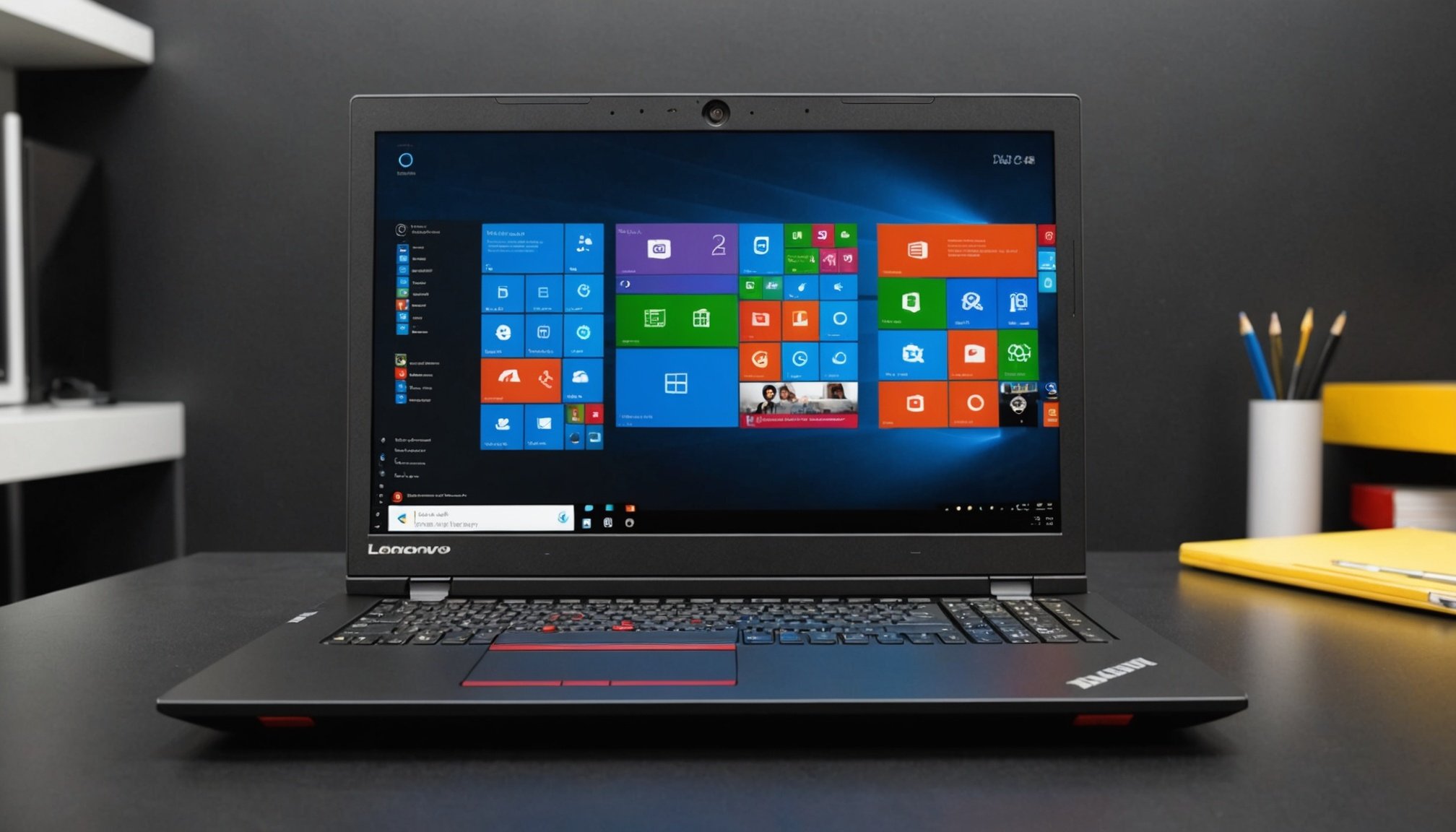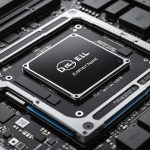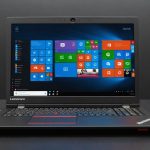Understanding Remote Desktop Access Security
Remote Desktop Access is a valuable tool, allowing users to access their computers from virtually anywhere. However, it comes with significant security risks. When not properly secured, remote connections can be vulnerable to attacks such as brute force, man-in-the-middle, or unauthorized access. This makes safeguarding your Lenovo ThinkCentre M90n particularly essential.
Security Risks of Remote Desktop Connections
Remote desktop connections are often targeted by cybercriminals. Common risks include exposure to malware, compromised data, and identity theft. Attackers can exploit weak passwords or unpatched software vulnerabilities to gain access to sensitive information. On Lenovo ThinkCentre M90n devices, users should be especially cautious, as these machines might store proprietary or business-critical data.
Also to read : Elevate Your Home Sound Experience: The Ultimate Guide to Configuring a Sonos Arc Multi-Room System with Google Assistant
Importance of Security on Lenovo ThinkCentre M90n
Enhanced security measures on the Lenovo ThinkCentre M90n are crucial. This can be achieved by using robust firewall protection and continuously monitoring access logs. Employing methods like Network Level Authentication can also bolster security by requiring users to authenticate before establishing a remote session. Furthermore, regularly updating software and employing strong passwords can significantly reduce the risk of unauthorized access, ensuring that the benefits of remote access are not overshadowed by security compromises.
Utilizing Firewall and Antivirus Software
In safeguarding your Remote Desktop Access, configuring firewall protection is essential. Start by accessing the Windows Firewall settings on your Lenovo ThinkCentre M90n. To ensure optimal security, enable the firewall and configure it to block unsolicited inbound connections, keeping potential threats at bay. Additionally, creating rules that permit only critical applications can further protect your system.
Also read : Maximizing Battery Life: Expert Tips for Optimizing Power Settings on Your HP ZBook Firefly 15 G7
Consider adopting recommended antivirus solutions to safeguard against potential malware. Solutions such as Norton, McAfee, or Bitdefender are compatible with Lenovo ThinkCentre devices and offer comprehensive protection. These tools scan your system for malicious software, providing alerts for any suspicious activity.
Regularly monitoring your firewall and antivirus software is imperative for robust security. By keeping an eye on alerts and notifications, you can swiftly respond to identified threats. Review your settings periodically to ensure that protections remain aligned with current security challenges.
By integrating firewall protection and antivirus solutions into your cybersecurity strategy, you provide a formidable defence against potential cyber threats. Through vigilance and proactive management of these tools, your Lenovo ThinkCentre M90n can operate confidently in the challenging realm of remote desktop access.
Configuring Remote Desktop Settings
To enhance the security of your Lenovo ThinkCentre M90n, it’s pivotal to properly configure remote desktop settings. This begins with understanding the access controls available to you.
Accessing Remote Desktop Settings
To access these settings on your Lenovo ThinkCentre M90n, navigate through the Control Panel to System and Security. Here, select ‘Allow remote access to your computer,’ ensuring the configuration aligns with your security needs.
User Account Control and Privileges
Carefully configure user account control. Assign privileges by determining which accounts are authorised for remote access. Restrict access to trusted users only, minimising potential vulnerabilities.
Enforcing Network Level Authentication
One of the most effective ways to secure remote access is by enforcing Network Level Authentication (NLA). Enabling NLA requires users to authenticate before a remote session begins, adding an extra layer of security. To enable this, check the ‘Allow connections only from computers running Remote Desktop with Network Level Authentication’ option.
Through these configurations, the risk associated with remote desktop connections diminishes significantly. Revisiting configuration settings periodically ensures continual adaptation to evolving security needs.
Implementing Strong Password Protocols
To safeguard your remote desktop accounts, it is crucial to implement robust strategies for password security. A strong password is fundamental to account protection, and several guidelines can ensure this. Always use a mix of uppercase, lowercase, numbers, and symbols, and choose a length that exceeds ten characters. Passwords should not include easily guessed information, such as birthdays or common phrases.
Beyond mere strength, regular updates are vital. Setting a schedule to change passwords can mitigate risks of unauthorized access. Aim to update every three to six months to remain secure. For improved management, consider employing a password manager. These tools simplify the creation and storage of intricate passwords, providing automatic updates and reminders.
For the Lenovo ThinkCentre M90n, elevated password security is vital, ensuring protection against potential breaches. A proactive approach to password management not only fortifies security but also streamlines remote desktop access by reducing chances of lockouts or unauthorized entry. By adopting these protocols, you bolster your defense against increasingly sophisticated cyber threats.
Enabling Two-Factor Authentication
Two-Factor Authentication (2FA) provides an extra layer of security beyond passwords, significantly fortifying remote desktop access. It requires users to provide two forms of identification before gaining access, typically a password and a secondary verification (e.g., a mobile app code). This dual system reduces the risk of unauthorized entry, even if passwords are compromised.
To enable Two-Factor Authentication on the Lenovo ThinkCentre M90n, first, ensure your system supports a validated 2FA method. Usually, this involves linking an authenticator app like Google Authenticator or Microsoft Authenticator to your account. Once set up, each remote access attempt will require entering a code from the app after password entry, making unauthorized access virtually impossible.
Enabling 2FA provides significant benefits, including heightened security and peace of mind knowing additional verification is needed for login attempts. Cyber threats are ever-evolving, and as such, measures like 2FA are proactive steps toward securing sensitive data. Additionally, it ensures that even if an attacker has your password, they can’t access your system without the secondary factor, offering enhanced protection for your remote desktop environment.
Regularly Updating Software and Systems
To maintain robust system security on your Lenovo ThinkCentre M90n, prioritise regular software updates. This prevents potential vulnerabilities cybercriminals may exploit. Timely updates can enhance system performance, patch security flaws, and introduce new features. Use Windows Update settings to automate the process, ensuring your operating system and software applications remain current.
For optimal results, periodically check for updates manually. This proactive measure is crucial in a rapidly evolving threat landscape, where delay could lead to exposure. Outdated software is an open invitation to malware and unauthorised access.
Incorporating these practices into your regular maintenance routine fosters a secure remote access environment, safeguarding sensitive data. Regular updates reduce risk significantly and ensure your system operates smoothly, with fewer disruptions due to security breaches. By staying informed about current vulnerabilities and update alerts, Lenovo ThinkCentre M90n users can adapt to emerging challenges effectively.
Remember, a well-maintained system not only fortifies defence but also leverages the full potential of remote desktop access. Through ongoing vigilance and timely action, you uphold the integrity and functionality of your Lenovo device.
Monitoring Remote Desktop Access
In the complex realm of remote desktop access, monitoring is key to maintaining robust security on your Lenovo ThinkCentre M90n. Understanding access logs can help prevent unauthorized use.
Utilizing Event Viewer for Monitoring
Begin by using Windows Event Viewer to track remote desktop access. This tool records detailed logs of all access attempts, successful or otherwise, ensuring you can audit who is entering your system and when. Regular reviews of these logs can help you detect and respond to anomalies swiftly.
Conducting Regular Security Audits
Security audits are essential for identifying potential vulnerabilities. Periodically evaluating your remote desktop settings helps ensure they align with current security standards and practices. These audits can highlight misconfigurations or outdated protocols that might leave your system susceptible to attacks.
Analyzing User Activity Logs
Analyzing user activity logs provides insights into how your remote desktop is being used. It helps in identifying patterns that could indicate suspicious behaviour, such as multiple failed login attempts or unusual login times. By closely monitoring these logs, you can take prompt action to mitigate any identified security risks.
Through vigilant access monitoring and regular security evaluations, you strengthen your protection against security breaches, ensuring continuous, secure remote desktop operations.
Troubleshooting Common Remote Desktop Issues
Remote desktop access can sometimes present challenges. Understanding these issues helps in ensuring continuity. Here, we outline methods for troubleshooting without restating previously covered solutions.
Common Connectivity Problems
Issues often arise from network instability or incorrect configurations. To address connectivity problems, verify that the Lenovo ThinkCentre M90n is connected to a stable network. Check if the remote desktop settings are correctly configured, ensuring that the necessary ports are open and not blocked by firewalls.
Step-by-Step Troubleshooting
First, confirm that both the host and the client machines have Remote Desktop Access enabled. If the connection is slow or fails, diagnosing the network settings might reveal bandwidth limitations. Verify that both machines have the correct IP addresses, and consider restarting both devices to reset network configurations. If connection errors persist, check firewall settings to ensure remote access is permitted.
Resources for Additional Support
For unsolvable issues, Lenovo support provides comprehensive assistance. Utilize Lenovo’s support forums and knowledge base for specific guidance on the ThinkCentre M90n. Understanding the available resources can ease the process, offering effective solutions for remote desktop challenges. By remaining proactive, you can maintain a seamless and secure remote access environment.











